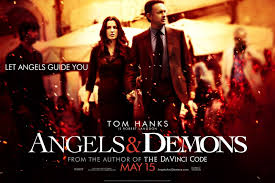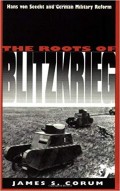Angels & Demons: A Book Review

Angels & Demons by Dan Brown
You Know, I continue to struggle to find acceptable full-width photos, these days. I wonder why --- in a very casual way.
Anyhoo...
Dan Brown's novel: Angels & Demons.
Well, the first thing to say is that it is better than Da Vinci Code. The Da Vinci Code, in my opinion, is like a Scooby Doo adventure WITHOUT the fun!
Angels & Demons is better than Da Vinci Code, in that more stuff happens... eventually. You see, the former is approximately 570 pages in hardback. Angels & Demons starts to find its inner Scooby Doo by page 366.
However, the previous 365 pages make for a ponderous journey. And to be clear, just because the book finds its inner Scooby Doo at page 366, this does not mean that, from here on, the book sails briskly to its dramatic conclusion.
To continue with my awkward qualifying...
Although the conclusion is genuinely dramatic, exciting, even thrilling (and I would even go so far as to use the term gut-wrenchingly tragic), the journey to this promised land is not a brisk jaunt from page 366.
WHAT ON EARTH AM I GOING ON ABOUT?!?!?!?!
Let me try it this way: It is my belief that a fundamental problem with both Da Vinci Code and Angels & Demons is that of the character of Professor Robert Langdon, a Harvard man whose field is the study of the meaning and significance of religious symbols and images. He is a symbologist.
Robert Langdon is meant to be the hero of these books. But the story is communicated to us through the narrow point of view of this man's expertise in and devotion to the scholarly field of symbology.
Robert Langdon does not have any general investigative grasp to cover the big picture, the general totality of what is going on.
Let me put it this way...
Suppose a friend of yours went someplace exotic like Switzerland.
Okay? Are you supposing?
Now suppose that she gathered you and some more of her friends and family in her living room to present a slide show of her journey about her trip to Switzerland.
Now suppose that her great passion in life (though she never pursued it as a profession) is insects.
Just imagine what "a general audience," would expect and hope to learn and hear about Switzerland: What's the skiing like? Is the chocolate really legendary? What's the club scene like? What are some of the country's defining monuments?
And so on and so forth, yes?
Now suppose that the thrust of her slide show leaned heavily toward the kind of insects she came across, on her way to Switzerland and in Switzerland and coming home from Switzerland.
Just imagine that for a minute!
The audience, in this situation, might very well be lucky if her slide show even made tangential reference to the topics of general interest I indicated above.
I want that to sink in. Imagine a potentially great slide show on Switzerland being ruined by a 80-90 percent focus on insects.
INSECTS!
It's not that I have anything against insects, because I don't. Insects are great. As I understand it, insects (especially ants) were here on this Earth before us and may well be here long after we're "gone..."
But I was promised Switzerland and what I got was insects... in Switzerland.
You well might be wondering: Am I claiming that, with both the Da Vinci Code and Angels & Demons, that what was actually delivered was, somehow, other than what was promised?
The answer is 'Yes,' but if this is any consolation (it probably isn't), I do not believe that the bait and switch is malicious on the part of the author, Dan Brown.
Instead of following that, no doubt, tantalizing thread, let us push forward with this review.
What's it about?
What is the book, Angels & Demons, about?
Let's look at the inside jacket cover:
"An ancient secret brotherhood. A devastating new weapon of destruction. An unthinkable target. When world-renowned symbologist Robert Langdon is summoned to his first assignment to a Swiss research facility to analyze a mysterious symbol---seared into the chest of a murdered physicist---he discovers evidence of the unimaginable resurgence of an ancient secret brotherhood known as the Illuminati... the most powerful underground organization ever to walk the earth. The Illuminati has now surfaced to carry out the final phase of its legendary vendetta against its most hated enemy---the Catholic Church.
"Langdon's worst fears are confirmed on the eve of the Vatican's holy conclave, when a messenger of the Illuminati announces they have hidden an unstoppable time bomb at the very heart of Vatican City. With the countdown under way, Langdon jets to Rome to join forces with Vittoria Vetra, a beautiful and mysterious Italian scientist, to assist the Vatican in a desperate bid for survival.
"Embarking on a frantic hunt through sacred crypts, dangerous catacombs, deserted cathedrals, and the most secretive vault on earth, Langdon and Vetra follow a 400-year-old trail of ancient symbols that snakes across Rome toward the long-forgotten Illuminati lair... a clandestine location that contains the only hope for Vatican salvation."
Blah, blah, blah...
I'm sorry to be so unprofessional, but that description makes the novel seem far more exciting than it actually is. If you read that description, thinking that you are in for something like Indiana Jones/Lara Croft/Kung Fu Panda, then just forget it.
The Time Bomb Thing
There is, indeed, a time bomb in this story. I am not fond of this device in novels.
I have three reasons for this:
- Angels & Demons features a time bomb, that if not found (and has its blah, blah, blah "containment field," blah, blah, blah, recharged) within four hours, blah, blah, blah.... ultimate destruction and all that.... The first problem is that I cannot read a 570-page book (Did I mention the book is 570 pages long?) in four hours. Therefore, any real-time relevance is already completely lost on me as a reader.
- The second problem with a so-called "time bomb" in a novel is that the author can---I hate to say it---manipulate time any way he sees fit. That is to say, that the author can, in effect, say: A minute of Earth-time is the equivalent of a year in Moon-time. What does this mean? It means that a year's worth of Moon-time exposition can be crammed into a minute's worth of Earth-time's patience and endurance---as it is in Angels & Demons; and remember, in the case of Angels & Demons, it is exposition given from the very narrow perspective of Robert Langdon's expertise in religious symbols and images. I was promised Switzerland!
- And finally, if one is going to incorporate the dramatic device of a time bomb in his novel, he has to make sure that the urgency of the narrative matches the urgency of the alleged time bomb. It seems to me that the novel did not even attempt such a synchronization. In other words, it seemed to me that the narrative was a leisurely as if a time bomb did not exist in the story.
And if I may amplify that last point: Robert Langdon brings nothing "to the table," as it were, other than his academic expertise in religious symbology. This means, of course, that he is required to spend an enormous amount of time reading, thinking, figuring out puzzles, studying records and other ponderous documents in grand archival offices, all while explaining the plot of the book to his cohort, in the case of Angels & Demons, Vittoria Vetra.
What I am saying is that the so-called "time bomb" cannot be allowed to explode until Robert Langdon has concluded all of his observations, researches, analysis and second- and triple-guessing, and has fully explained (rather than experienced or lived) the plot to his sidekick, for the benefit of the readers.
I don't want to overstate this, or get up on my high horse of outrage... but I will!
A so-called "time bomb" in a narrative situation like this, amounts to a dramatic lie, even bad faith between author and reader.
The Trip to Switzerland Slide Show
I want to expand on the example of the Switzerland trip slide show.
Let's flesh this out by giving our protagonist a name: Jenny.
And giving her a profession: insurance company executive.
Her hobby: the rapturous study of the ways and customs of insects.
Jenny has a "Type A," bureaucratic personality. She is always making lists of this, that, or whatever, always setting daily, weekly, monthly goals for herself, and so forth. She is an "everything has a place, everything in its place," attitude about... EVERYTHING!
Jenny is, to be sure, a lovely person with many endearing, life-affirming, and nourishing qualities.
Let us say that this is the person who has recently returned from her trip to Switzerland.
And this is the person who has gathered some of her family and friends into her living room to watch a slide show she has prepared documenting (and "documenting" is precisely the word to use with Jenny) her trip to Switzerland.
Now, there are things about Switzerland a general audience would want to know about Switzerland, which I have already touched on.
So what does Jenny's slide show about her trip to Switzerland offer us?
- Getting a passport to travel to Switzerland.
- What kinds of forms one has to fill out to get the passport to travel to Switzerland.
- When is the best time of day and the week to go the Post Office, to get one's passport to travel to Switzerland.
- Jenny going to bookstores to buy the best Swiss-to-English dictionaries; see Jenny the Rosetta Stone program (on the Swiss language); and see Jenny practicing speaking Swiss --- using the Rosetta Stone program --- in preparation for her trip to Switzerland.
- See Jenny going to the department stores, searching, in frantic desperation for just the right Hilary Clinton pant-suit, in preparation for taking the photo, to be used on the passport she is getting, to go to Switzerland.
- See Jenny getting her hair and nails done, in precisely the right style to go with the Hilary Clinton pant-suit she selected, in preparation for taking her photo... for the passport... which will allow her to travel to Switzerland... Because you never get a second chance to make a good first impression.
- You didn't think we'd forgotten about the insects, did you?
- See Jenny researching on her phone, tablet, and personal computer all about the best, most affordable (not to say cheapest) restaurants, coffee bars, and motels in Switzerland, in the region she will be staying.
- See Jenny researching on her phone, tablet, and personal computer all about the insect-studying societies in Switzerland.
- See Jenny moaning and groaning about traffic --- on the way to the airport --- to travel to Switzerland --- by aeroplane, of course.
- See Jenny going on and on and on about "business class" aboard the plane of whatever airline she chose.
- See Jenny talk about strategies for coping with the jetlag.
I think I've made my point, which is that there is a whole lot of talking about Switzerland (even when she gets to the country) and not a whole lot of actually experiencing and directly communicating, in a palpable way... Switzerland! In addition to all of the administrative and bureaucratic stuff I've mentioned, Jenny chooses to communicate the experience of Switzerland through her greatest passion outside of insurance: Insects. Remember the insects?
This makes for a rather tedious (to be kind) experience for all of us watching a slide show about a trip, that we were promised (albeit implicitly) was about the sights and sounds of Switzerland!
Da Vinci Code/Angels & Demons Whodunnit Comparison
Now, I have said that Angels & Demons is better than Da Vinci Code (though I am not recommending either book).
I have said that The Da Vinci Code is a Scooby Doo adventure without the fun. I mean that; and just to show you how serious I am about the metaphor...
What is the Scooby Doo set up?
There's this bunch of kids riding around the country in a van, painted psychedelic colors, and named "The Mystery Machine."
You have brainy Velma, the young lady with the glasses. There's Fred and Daphne, who are the Dr. Watson to Velma's Sherlock Holmes. Then there's Shaggy (human) and Scooby (canine); these are the guys that get their hands dirty. These two are the ones who engage the "ghost" or "monster."
The gang are, what we would today, call "paranormal investigators." They go to some town apparently being menaced by a "ghost," or "monster," "werewolf," or "vampire," or something like that.
Velma would do most of the heavy lifting, in terms of getting a handle of what in Sam Hill is going on around here. She would be ably assisted by Fred and Daphne. Then the plot always commanded that Shaggy and Scooby engage the monster or ghost (albeit, reluctantly, which is, in part, what made it funny).
A hilarious chase would ensue, involving Scooby and Shaggy and the monster or ghost. The creature would inevitably get himself distracted by the zany hijinks of our reluctantly heroic duo; that is to say that the creature would trip and fall into some kind of entanglement.
The creature would be sitting there, stuck in quicksand or something. His mask would be yanked off and everybody would say: "Mr. Feldman?!?!?"
The reason for the deception would invariably concern some sort of real estate scam.
"And I would have gotten away with it, if it weren't for you meddling kids!"
Now, in Da Vinci Code, nobody unmasks the villain. Nobody takes off the mask to reveal Mr. Feldman.
Imagine, in those Scooby Doo cartoons, that the true face of the villain were never revealed by a third party. Imagine Mr. Feldman joining the group, with gun in hand, ripping off his own rubber werewolf mask and saying:
"Yes! It is I, Mr. Feldman. I am and have been, all along, the one and true villain behind the horror and dread that has enveloped this town for the past three months. You see, I found out that the government is planning to build a fancy highway road through here, and I wanted to be the biggest landowner around, in order to profit. I wanted to buy the land cheap, so I revived the legend of the robotic werewolf canine hydra from Poughkeepsie, to scare everybody away and drive down the land prices."
And on and on and on.
That is basically what happens in the Da Vinci Code.
Angels & Demons is a little different. Mr. Feldman is not unmasked by Robert Langdon deliberately and directly. That is to say, another character in the book unmasks the villain. But Robert Langdon rather stumbles into the position to do so, indirectly, sort of like Forrest Gump, in that the symbologist was at the right place at the right time.
The Merciful Conclusion of This Review
I have given this book a hard time in this review. Therefore, what I am about to say may surprise you.
The plot of this novel is a good one. It is clever, unique, and thrilling. The components are woven together masterfully; and as I mentioned before, there is an aspect to the conclusion which is gut-wrenchingly tragic.
At the end of the day, all I'm really saying is that it is way too long. This book would have been far more dramatically effective at three-hundred or fewer pages --- as opposed to the approximately five-hundred-seventy in hardback, as Angels & Demons is.
This is especially true if the author, Dan Brown, was not going to alter or adapt his prose delivery style --- which, again, delivers the story through the very narrow perspective of the academic Robert Langdon's expertise in religious symbology. I must also caution all who would read this novel: I hope you are obsessed with Roman and Vatican architecture and urban planning.
A much shorter book (300 or fewer pages) would have gone a long way, in purely structural terms, to align the urgency of the time bomb device with the expectation of the reader, thus giving the book better, more effective pacing. I would have liked the book's editors to be much more ruthless here.
At three hundred or fewer pages I could have recommended this book; at five-hundred-seventy, I cannot.
Thank you for reading.








